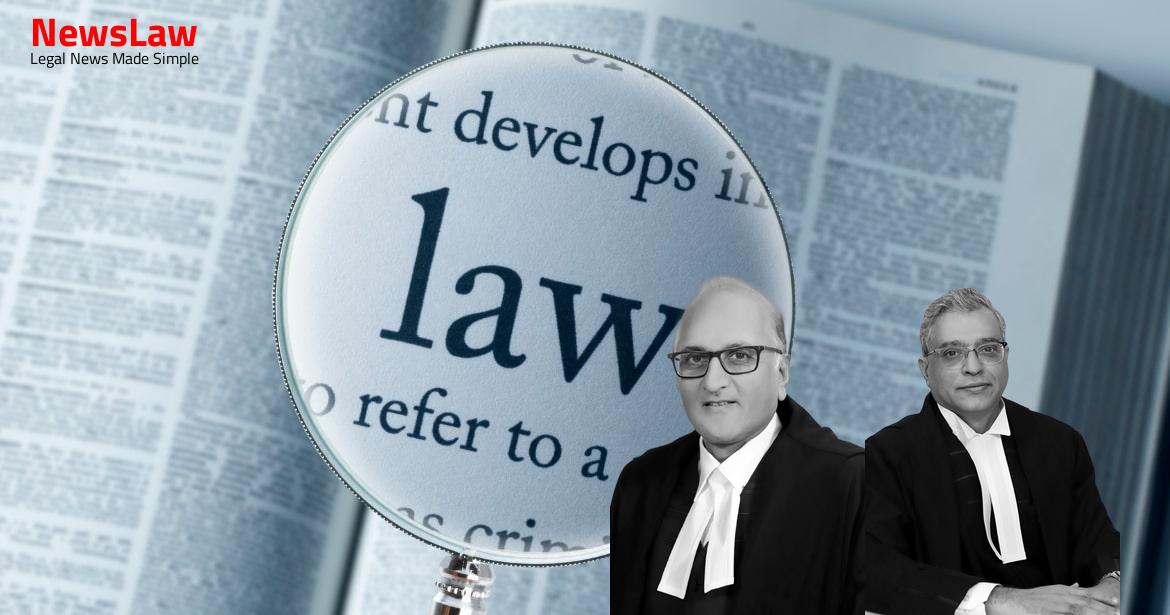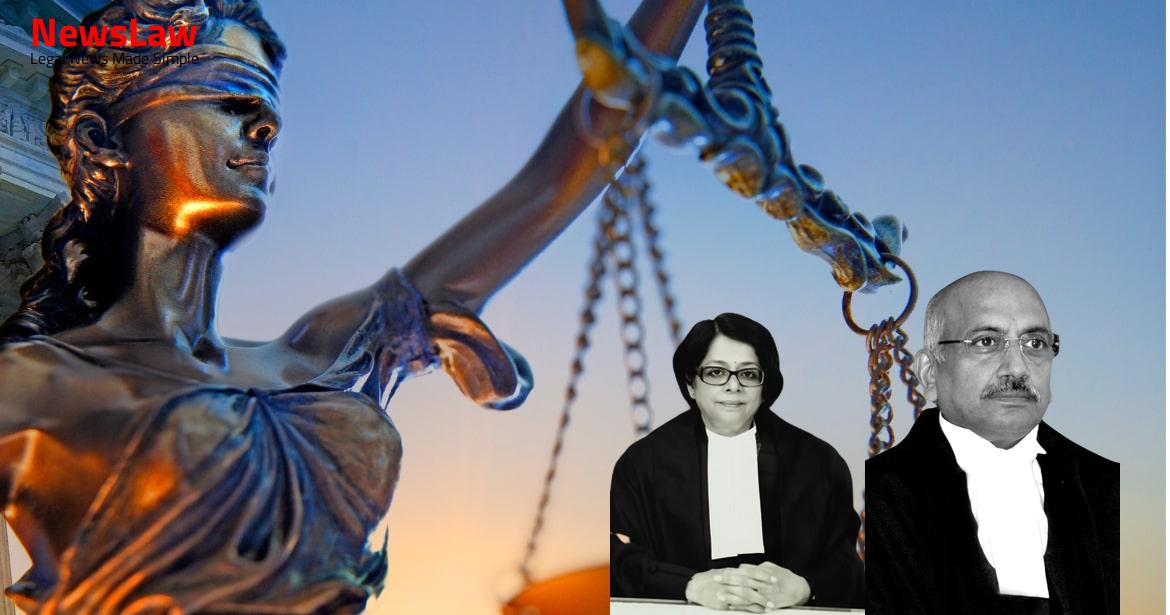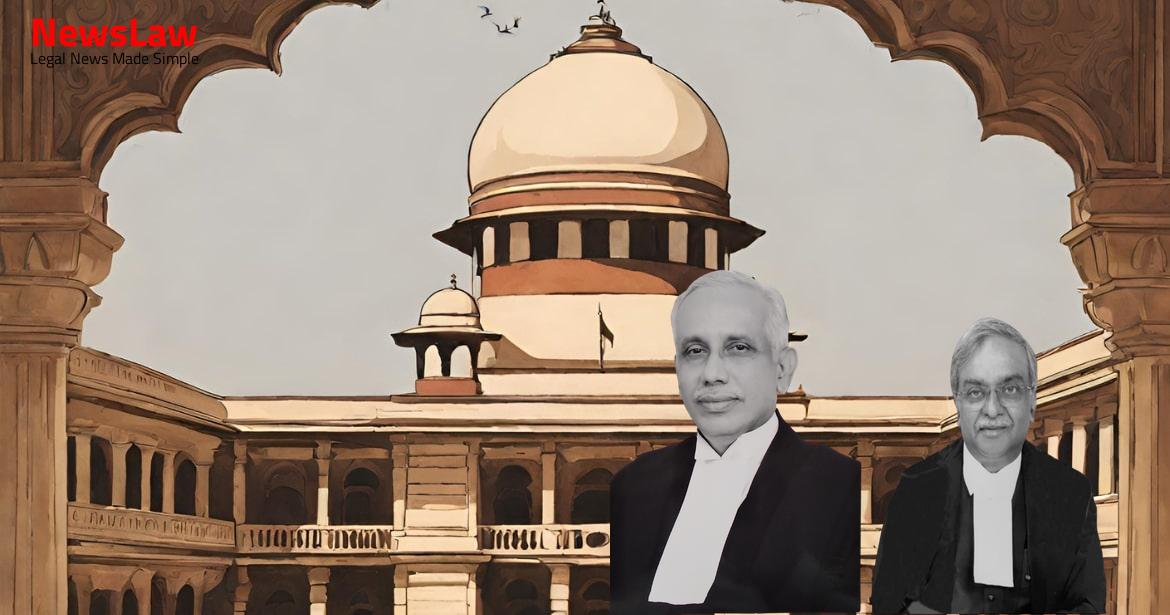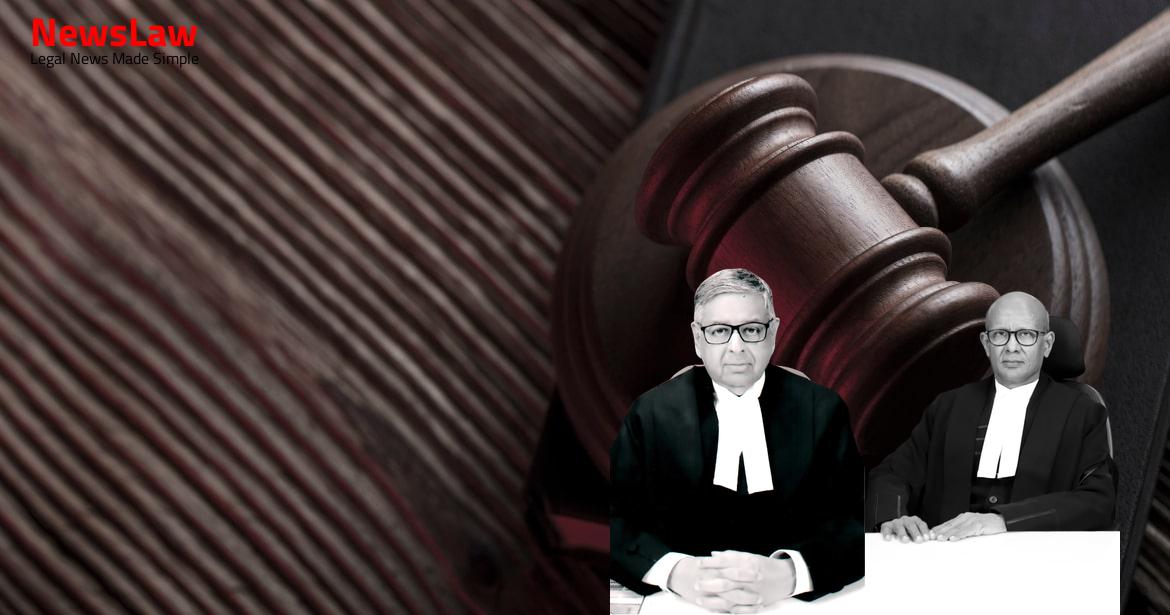In a recent legal case, the court delivered a significant judgment affirming the conviction based on circumstantial evidence. The court laid down stringent criteria, known as the ‘panchsheel’ of proving guilt through circumstantial evidence, ensuring that the established facts were consistent only with the hypothesis of the accused’s guilt. This blog delves into the court’s legal analysis, emphasizing the importance of a complete chain of evidence to exclude any reasonable doubt of the accused’s innocence.
Facts
- Appellant convicted and sentenced for committing murder and concealing evidence
- High Court affirmed Trial Court’s decision
- This appeal by special leave is against the High Court judgment
- Appellant tried in Sessions Case for offences under IPC Sections 302 and 201
- Prosecution alleges appellant murdered his wife and tried to create false alibi
- Appellant claimed his wife received a call from two persons during his absence
- The appellant made a complaint at Hulimavu Police Station at about 9.45 a.m.
- The appellant found his wife tied to a chair with her throat slit.
- The appellant’s wife had gold ornaments on her person, inconsistent with a robbery theory.
- The appellant had called his jogging partner around 5.24 a.m. on the relevant day.
- The appellant arrived at his jogging partner’s house shortly after the incident.
Also Read: Electoral Malpractices in Mayor Election
Analysis
- The accused must be guilty before a court can convict.
- The established facts should be consistent only with the hypothesis of the guilt of the accused.
- The circumstances should exclude every possible hypothesis except the accused’s guilt.
- There must be a chain of evidence complete enough to leave no reasonable ground for a conclusion consistent with the accused’s innocence.
- The act must have been done by the accused in all human probability.
- The call records showed that the call from the deceased’s phone was received before the appellant reached the house of PW2.
- An attempt was made to create an impression that the call was made when the appellant and PW2 were at the jogging track.
- The mentioned circumstances were proven individually and formed a consistent chain supporting the guilt of the appellant.
- The principles outlined in the judgment are considered the ‘panchsheel’ of proving a case based on circumstantial evidence.
- Appellant was on the jogging track in black leather shoes instead of his sports shoes
- Bloodstains were found on the black leather shoes
- No explanation was given by the appellant for these crucial and relevant circumstances
Also Read: Balancing Power and Transparency: Electoral Bonds Struck Down, Disclosure Mandated
Decision
- Appeal dismissed
- Appellant must serve out the sentence awarded
Also Read: Recall of Resolution Plan Approval: Legal Analysis
Case Title: SATHISH KUMAR .A. @ SATHISHKUMAR ANAND @ SATHISH KUMAR GUPTA Vs. STATE OF KARNATAKA (2022 INSC 222)
Case Number: Crl.A. No.-001000-001000 / 2021



